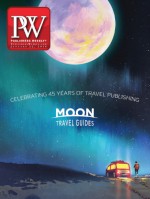The events of the Bible are set in real, historical places in the ancient Near East, locations in and around what are now Egypt, Iraq, Israel, and Syria. This area was the cradle of civilization, and has in recent centuries been the source of some of the richest and most important archaeological discoveries. The ESV Archaeology Study Bible, due out in March from Crossway, brings the deep historical context of archaeology to the timeless world of Scripture, illuminating the beloved ESV text with essays, notes, and hundreds of photographs, maps, and illustrations contributed by field-trained archaeologists. Dane Ortlund, Crossway's executive vice president of Bible Publishing, says the resource provides "a distinctive Bible offering for Christians to see the earthiness and historical embeddedness of the Scripture."
Edited by John Currid, an Old Testament scholar and archaeologist at Reformed Theological Seminary, and David Chapman, professor of New Testament and archaeology at Covenant Theological Seminary, Crossway's ESV Archaeology Study Bible is a work six years in the making and a Bible unlike any other. "We were firm in our conviction that the main contributors must be trained field archaeologists, ones who have spent significant time getting their hands dirty," Currid says. To that end, Chapman explains, he and Currid assembled a team of 13 "expert Christian field archaeologists, who were all also capable Bible commentators." According to Chapman, "Every contributor was selected based on his or her years of experience in archaeological fieldwork and in applying archaeology to biblical interpretation. Thus all were drawing on many years of teaching and writing as they read through each biblical book, carefully examining each passage for archaeological connections."
Currid thinks of archaeology and Scripture as naturally complementary: "I don't think the purpose of archaeology is to prove the Bible," Currid says. "The Bible doesn't need to be proven; it stands well enough on its own. The purpose of archaeology is to illuminate the historical background and setting of the biblical narratives. It helps to demonstrate that the biblical accounts truly took place in time and history."
For instance, few readers probably realize that Genesis takes place in the Middle Bronze Age, which spanned from 2200 to 1550 BC. That context allows the archaeologists who annotated the ESV Archaeology Study Bible to provide information such as that Abel's work as "a keeper of sheep" would have yielded milk, skins, and wool but not meat, since, as the accompanying note points out, "animal husbandry did not provide meat for humans at this time." This Bible is full of annotations small and large, such as a map that pinpoints two possible locations for the real Eden, adding a whole new dimension to the story of Adam and Eve.
Looking at the completed Bible, Chapman says, "I am struck by how much more the biblical text is made understandable through notes on such diverse matters as fishing and ancient boats in Galilee, agrarian life, tax collecting, foot washing, stone vessels in Jewish purity law, sectarian divisions, burial techniques, and crucifixion practices."
Chapman believes that "many people will want to make this their main Bible for personal reading and for taking to church" but also sees a loftier purpose for the resource: "As we all grow in our awareness of the cultures that the biblical authors are addressing, we can better comprehend God's revelation to the initial recipients of Scripture. Through this means, we also better understand and apply the Bible in our world today."



 Volume 265
Issue 4
01/22/2018
Volume 265
Issue 4
01/22/2018





